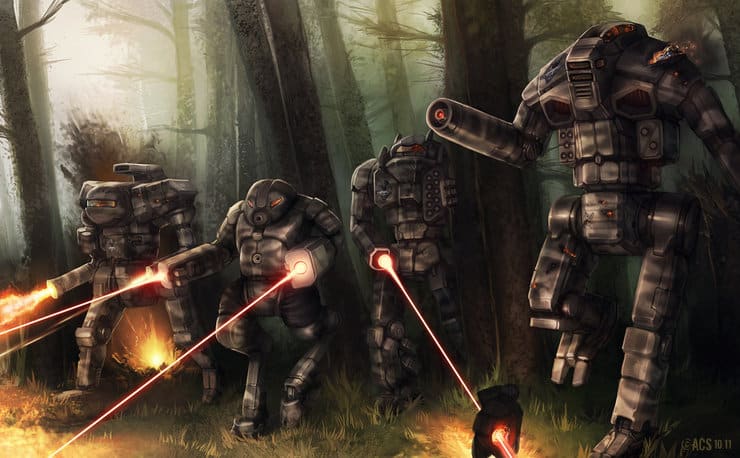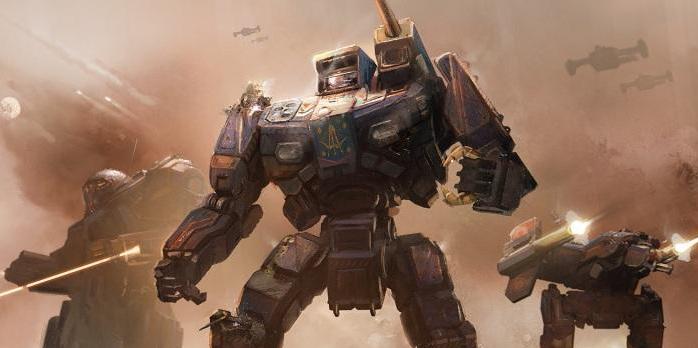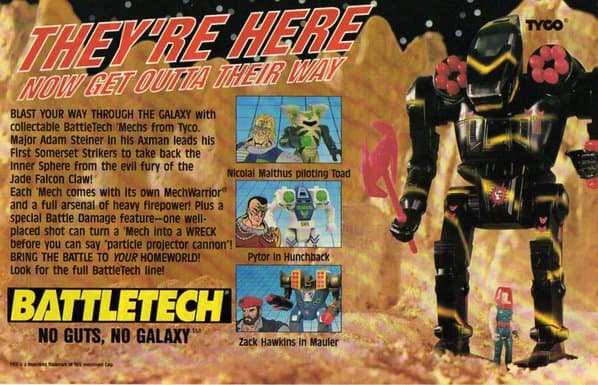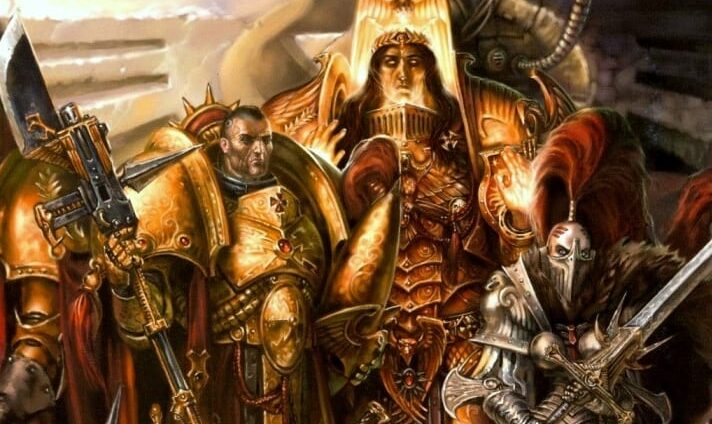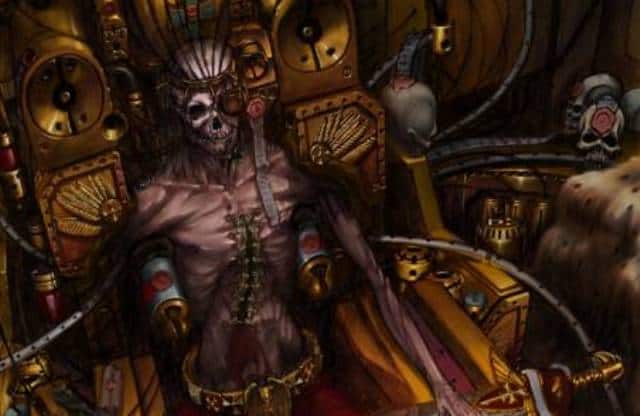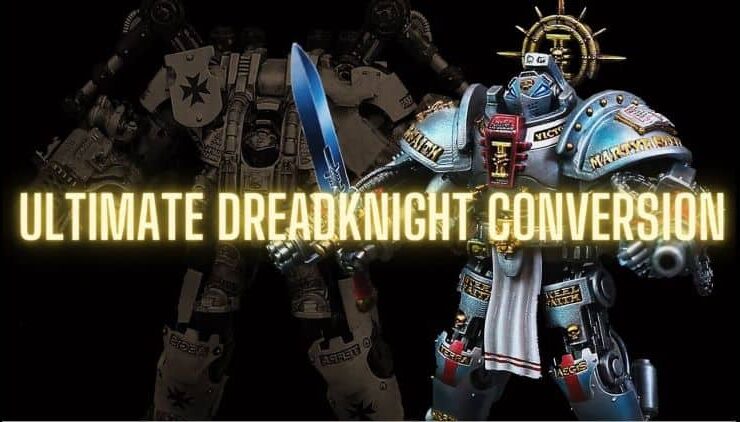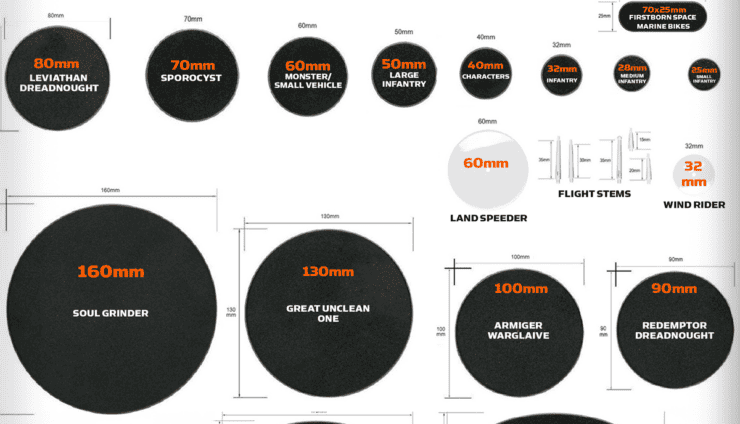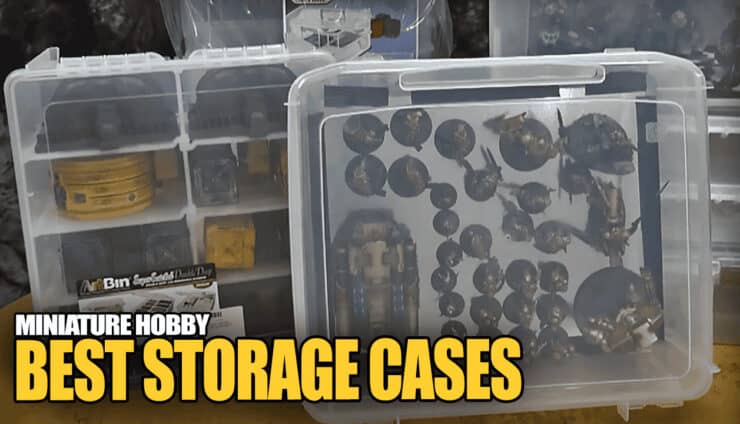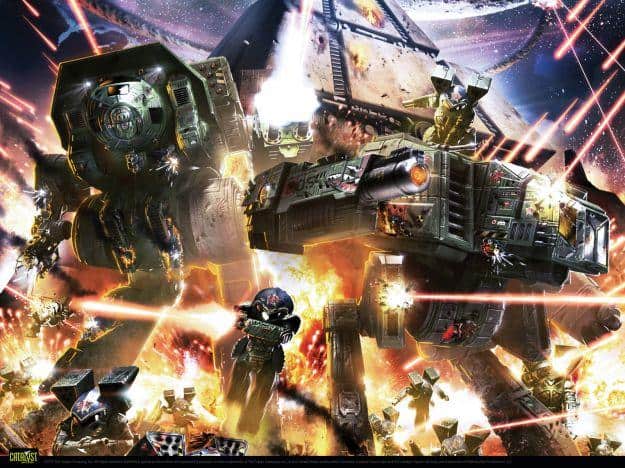 Hey Game Fans, we’re back with the second half of our feature on the Combat Phase for Battletech’s Alpha Strike rules. Come check out what you need to know.
Hey Game Fans, we’re back with the second half of our feature on the Combat Phase for Battletech’s Alpha Strike rules. Come check out what you need to know.
We’re going to finish up our review of the Combat Phase and hopefully get you folks into the fight. We’re not going to wait around, so let’s dive right in to a story in progress…
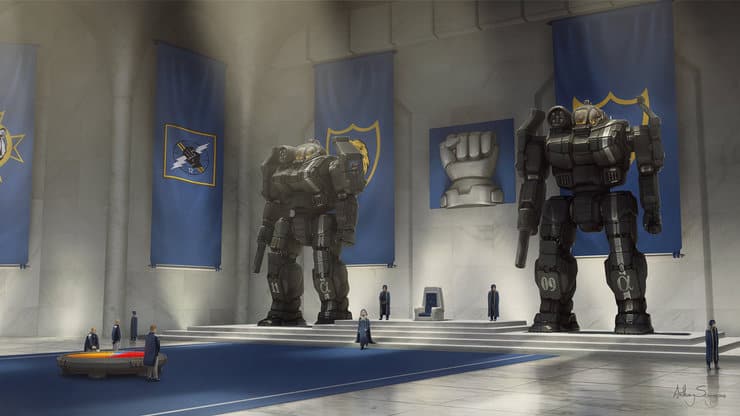
6: Calculate and Apply Damage
If the attack hits, the target will take damage, but there are a couple of steps in that process.
- Front or Rear: Units take additional damage when struck from behind, so determining the attack direction is important. In situations where it isn’t clear, lay a straight edge from the center of the attacker’s base to the center of the target’s base. If the straight edge enters through the rear hex face, it hits the rear. If it’s half rear and half another face, the target determines which facing is struck. Infantry is always struck in the front facing.
- Mechanized Battle Armor: Some units can carry squads of Battle Armor externally. If a unit transporting Battle Armor is struck from the front, roll 1D6. On a roll of 1-4, the unit is struck normally. on a 5-6, the Battle Armor is hit and takes the damage instead. Excess damage passes onto the unit normally.
- Amount of Damage: The damage applied to the target is based off of the distance from Attacker to target and which of the three range bands that distance falls under.
- Damage to Rear: Any attack that hits the rear facing causes an additional point of damage.
- Overheat Damage: If the unit has the Overheat special ability (check out its card), it can increase its damage at the expense of overheating. This determination has to be made when the attack is declared, but before it’s resolved.
- Special Ability Damage: Some of the Special Abilities provide alternative damage values with their own range values. If you are using these special abilities, use their alternative damage values.
- Heat: Some weapons increase the heat scale of other units. A unit with this special ability will increase the target unit’s heat in addition to damage dealt. Units that don’t track heat take additional damage on a 1 for 1 ratio.
- Underwater Damage: Except for Torpedoes, damage from weapon attacks is reduced by half. Submerged units can be destroyed due to breaches, and every successful weapon attack generates a chance for a critical hit. Units with no armor remaining are considered destroyed.
- AOE Damage (Area of Effect): Units at different elevations add their distance in height to the actual distance from the Point of Impact. If an AOE has a burst radius of 3 inches, for example, a unit that is two inches away from the Point of Impact, and sitting on two inches of elevation higher than the Point of Impact is actually outside the AOE.
- Protomechs: Protomechs are tracked as part of a five unit team, but move and fire individually. There’s a handy chart on page 39 to break down the damage an individual protomech deals.
- Applying Damage: Damage is applied using a question and answer flowchart that makes the process easy as pie. We all like pie, right?
- Does the target have any Armor (A) bubbles left on its card?
- Yes: Check off one bubble for every point of damage delivered by the attack until all the damage is applied or all of the Armor bubbles are checked off. Then Proceed to Question 2.
- No: Proceed to Question 3.
- Is there damage remaining?
- Yes: Proceed to Question 3 to allocate any remaining damage.
- No: Proceed to Question 6.
- Does the target have any Structure (S) bubbles remaining?
- Yes: Check off one bubble for every point of damage delivered by the attack until all the damage is applied or all of the Structure bubbles are checked off. Then Proceed to Question 4.
- No: Proceed to Question 4
- Is there damage remaining?
- Yes: the target is destroyed, if it’s transporting other units, they are also destroyed.
- No: Proceed to Question 5.
- Does the target have any structure (S) bubbles remaining?
- Yes: Roll once on the determining Critical Hits Table. The Attack is finished.
- No: the target is destroyed, if it’s transporting other units, they are also destroyed.
- Does the target have the BAR special ability, or is it an aerospace unit and the damage delivered from a single attack exceed its threshold value?
- Yes: Roll once on the determining Critical Hits Table. The Attack is finished.
- No: Proceed to Question 7.
- Is the target a vehicle?
- Yes: Roll once on the Determining Motive System Hits table (Page 42). The Attack is finished.
- No: The Attack is finished.
- Protomechs (the damage cheats): Protomechs track damage as individual members, so the same table used to calculate individual damage dealt is used to calculate the amount of damage each one can sustain. Damage doesn’t transfer between members of the unit, (so I’d use different colored markers or pens to track damage).
- Does the target have any Armor (A) bubbles left on its card?
7. Determine Critical Hits
All units can suffer critical hits (except Battle Armor and Infantry). The process is fairly straightforward. Once the conditions to check for a Critical Hit are met, the attacker rolls 2D6 and consults the appropriate chart based on the unit type. The unit card is marked with any critical hits that are rolled, and they persist until the end of the battle. If a critical hit is determined to have no effect (MP hit on a unit that all ready has a movement of 0, for example), the unit takes an additional point of damage, but does not roll for a different critical hit. The conditions that can cause a critical hit are:
- All Non-infantry Units: Whenever the unit takes damage to its structure points. (Industrial ‘Mechs will roll twice and apply both results.)
- Any Unit with the BAR special ability: The Barrier Armor Rating is not as combat effective as traditional armors. Whenever a unit with this special ability takes armor damage, check for a critical hit. If the unit takes structure damage instead, check for two critical hits.
- Submerged Units: Units underwater have to be very careful of hull breaches. Any time a submerged unit takes armor damage, it needs to check for a critical hit. If the unit also has the BAR special ability, it checks twice.
- Aerospace Units: When rolling for critical hits on Aerospace Units, consult their specific rules on page 58 of the Alpha Strike book.
So What do the actual critical hits do? A lot of truly awful things to your units, ranging from completely destroyed, to Movement reductions, to a variety of effects that make them generate heat and run hotter than expected. We’re not going to show you everything behind the curtain, but you can check out pages 41 and 42 for both the chart of Critical Hit Effects, and the unholy amounts of damage they can do. Once Critical Hit effects have been determined, (if necessary) the attack has been completed for that unit and you can select another unit to make an attack until all of the attacks have been completed. We’re at that hefty word count again, so we’ll have to go over Physical attacks next week.
I hope you guys are enjoying these articles as much as we are. If you’re interested in an Alpha Strike Battle Report, you can find a narrated one here. We’ll see you Game Fans next week at the same time, same place, so check back and we’ll hopefully finish that pesky Combat Phase.
Game On, Game Fans
Again, a Huge shout out to Anthony Scroggins aka Shimmering Sword, for his beautiful Battletech artwork. Check out more of his work on Deviant Art.
